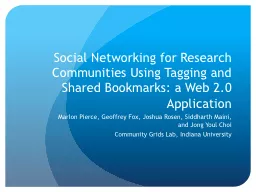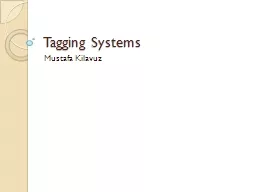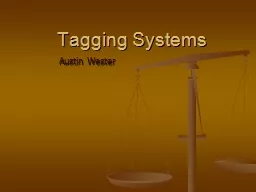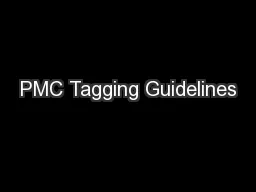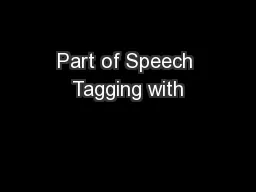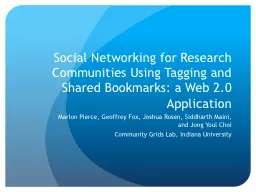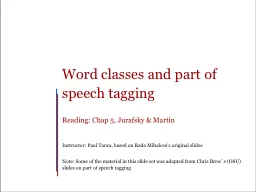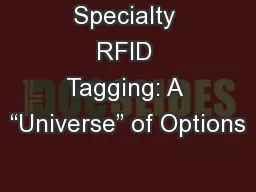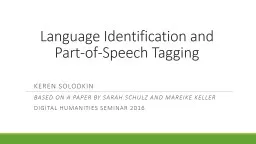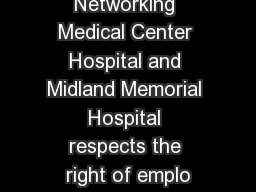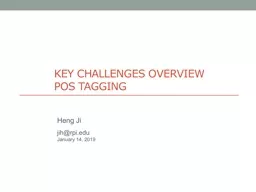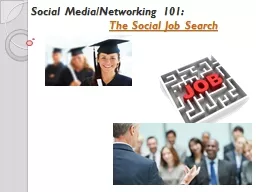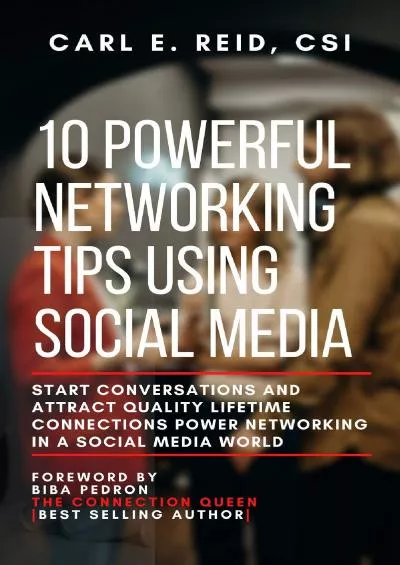PPT-Social Networking for Research Communities Using Tagging an
Author : alida-meadow | Published Date : 2016-02-23
Marlon Pierce Geoffrey Fox Joshua Rosen Siddharth Maini and Jong Youl Choi Community Grids Lab Indiana University Motivation MSICIEC is an NSF funded project
Presentation Embed Code
Download Presentation
Download Presentation The PPT/PDF document "Social Networking for Research Communiti..." is the property of its rightful owner. Permission is granted to download and print the materials on this website for personal, non-commercial use only, and to display it on your personal computer provided you do not modify the materials and that you retain all copyright notices contained in the materials. By downloading content from our website, you accept the terms of this agreement.
Social Networking for Research Communities Using Tagging an: Transcript
Marlon Pierce Geoffrey Fox Joshua Rosen Siddharth Maini and Jong Youl Choi Community Grids Lab Indiana University Motivation MSICIEC is an NSF funded project to engage researchers at minorityserving institutions in modern cyberinfrastructure . Melissa Higgins, University of Denver. Virtual Symposium on Information & Technology in the Arts & Humanities. PRESENTATION – . Melissa . higgins. Structure, subjectivity, and power: The provisional space of libraries within the social tagging movement. Mustafa Kilavuz. Tags. A tag is a keyword added to an internet resource (web page, image, video) by users without relying on a controlled vocabulary.. Helps to improve search, spam detection, reputation systems, personal organization and metadata. Austin Wester. Tags. A . keywords . linked to a resource (image, video, web page, blog, etc) by users without using a controlled vocabulary.. They help to improve search, personal organization, metadata, spam detection, and reputation systems. A case study in normalization. Abigail Elbow, Breena Krick, Laura . Kelly. NIH/NLM/NCBI/PMC. JATS-Con . | 9.27.2011. PMC Overview. What do those people do with data, anyway?. But first…. The PMC process:. Sep . 2015. EunJeong. . Cheon. . i501: introduction to informatics. Semiotic . Dynamics . and . Collaborative Tagging . Ciro. . Cattuto. , . Vittorio . Loreto, . and Luciano . Pietronero. . Contents. MaxEnt Re-ranked Hidden Markov Model. Brian Highfill. Part of Speech Tagging. Train a model on a set of hand-tagged sentences. Find best sequence of POS tags for new sentence. Generative Models. Hidden Markov Model HMM. Marlon Pierce, Geoffrey Fox, Joshua Rosen, . Siddharth. . Maini. , and . Jong. . Youl. . Choi. Community Grids Lab, Indiana University. Motivation. MSI-CIEC is an NSF funded project to engage researchers at minority-serving institutions in modern cyberinfrastructure . Reading: Chap 5, . Jurafsky. & Martin. Instructor: Paul Tarau, based on . Rada. . Mihalcea’s. original slides. Note: Some of the material in this slide set was adapted from Chris Brew. ’. s (OSU) slides on part of speech tagging. Julia Deets. VP Sales & Marketing, Metalcraft. What this presentation will cover:. Define “specialty” RFID tagging. When is it required?. Factors to identify in specialty RFID tagging applications. Keren Solodkin. Based on a paper by Sarah Schulz and Mareike Keller. Digital humanities seminar 2016. Plan. Introduction and Related Work. Training Data. Processing of Mixed Text. Results. Tools for Digital Humanities. However, there are numerous areas in which the use of such social network media may impact the work environment.. Social Network. Is a communication portal, usually Internet-based, which provides a variety of ways, such as e-mail, text messaging, and instant messaging, for users to interact with online communities or groups of people who share interests. . Heng. . Ji. jih@rpi.edu. January . 14. , 2019. Key NLP Components. Baseline Search. Math basics, Information Retrieval. Shallow Document Understanding. Lexical Analysis, Part-of-Speech Tagging, Parsing. . The Social Job Search. Agenda. Learning Outcomes. Networking 101. Your Friends. ’. Friends. Your . Friends. Your Friends. ’. Friends. ’. Friends. What is Networking?. You . can’t ask for connections, or learn to network by reading an article. Networking requires active engagement. Talking to friends, family and faculty is a good way to start. It’s no secret that this world we live in can be pretty stressful sometimes. If you find yourself feeling out-of-sorts, pick up a book.According to a recent study, reading can significantly reduce stress levels. In as little as six minutes, you can reduce your stress levels by 68%.
Download Document
Here is the link to download the presentation.
"Social Networking for Research Communities Using Tagging an"The content belongs to its owner. You may download and print it for personal use, without modification, and keep all copyright notices. By downloading, you agree to these terms.
Related Documents

